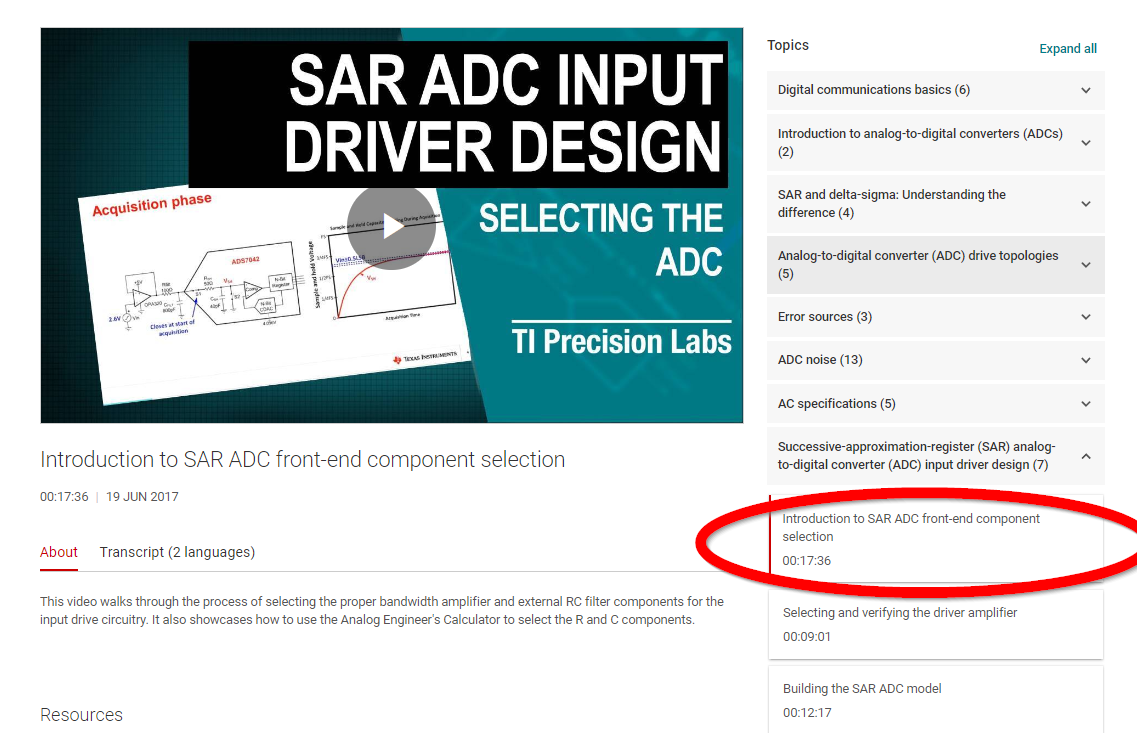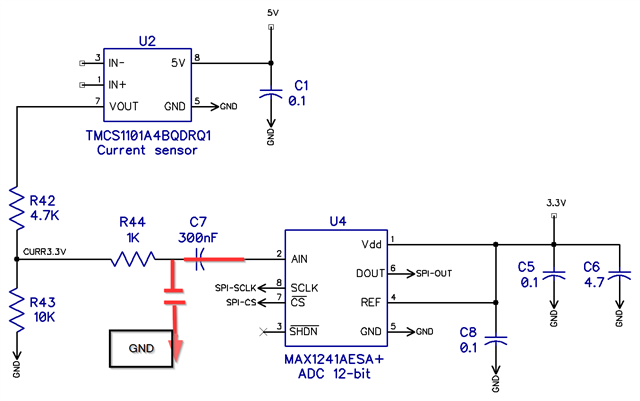Other Parts Discussed in Thread: TMCS1100, INA225
I am trying to use TMCS1101A3B-Q1 to measure 24VAC current. The typical current I care about is 150mA to 400mA, sustained over long periods of time. The load is a 24VAC solenoid for an irrigation valve (350mA inrush, 190mA holding, give or take). I mostly only care to know 1) if no current is seen for a few seconds, or 2) if current is above or below the 150-400mA range for a few seconds.
With no current I expect the output signal at 1.65V with +/9mV. What I actually see is 1.731V with +/-59mV variance.
Besides that, I see a spike every time I read from my ADC (MAX1240).
The layout around my TMCS1101 looks like this:

There is no copper on any layer left or right of the TMCS1101 for at least 5mm. The ADC is 30mm away (not shown). The nearby ICs are optocouplers. It's a 4 layer board with both internal layers uninterrupted GND and power is routed on the outer layers. There are no components on the back.
With no current, this is what I see:
The spikes correspond to when I read from the ADC (30Hz in these pics). The rest of the noise jumps about +/-59mV every ~3.5ns, presumably when the TMCS1100 integrator propagates a new signal to the output.
With 44mA of current:
The low frequency here is 60Hz, so it seems the sensor is reacting to the 24VAC 44mA load. However, the output is so noisy I don't think it is usable in this state, also you can see it's quite a bit higher than 1.65V.
My probes are calibrated. The probe GND is a ground spring. GND and signal are taken at the sensor pins. The 3.3V supply voltage is stable, also measured at the sensor. There is 10uF bulk capacitance, plus 4.7uF by the ADC. The TMCS1101 and ADC have 0.1uF decoupling.
My initial test had the TMCS1101 2mm from the ADC. I moved it 30mm away hoping to remedy the spikes. It didn't (shown above) but trying that did mean that I see the same behavior with two different TMCS1101 ICs.
1) Is what I'm seeing typical? (noisy output, offset with no current is not at 1.65V)
2) Is TMCS1101 a bad fit for my use case? Should I be looking at INA225 or something else? My 3.3V and 24VAC do not share GND.
3) What do I need to do to have a usable design?
I could RC filter the output signal. Is that recommended and/or typically needed? What R and C values would be appropriate given my use case for an irrigation valve described above? Filtering wouldn't help with the offset being so much higher than 1.65V.
Should I do anything else? I could put slots left and right of the sensor.






